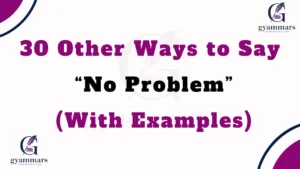Finding the right words to show care and support can make a world of difference when someone’s going through a tough time. Saying “I’m hanging in there” is often how people express resilience — but sometimes, those words can feel repetitive or not quite enough to capture how we truly feel.
Whether you’re checking in on a friend or describing your own emotional state, these alternative ways to say “hanging in there” can help your words sound more genuine, warm, and thoughtful.
What Does “Hanging in There” Mean?
The phrase “hanging in there” means trying your best to cope during difficult times, even if things aren’t going perfectly. It reflects strength, endurance, and quiet determination.
It’s a way of saying, “I’m struggling, but I’m not giving up.” The tone is usually hopeful but tired, showing that you’re doing your best to stay steady through challenges.
Is It Professional or Polite to Say “Hanging in There”?
Yes — “hanging in there” is polite and acceptable in both casual and semi-professional settings.
In workplaces, it’s often used to acknowledge stress without oversharing. However, it can sound informal if used in written communication like emails. In professional contexts, it’s better to say things like “managing things well,” “keeping up,” or “taking it one step at a time.”
So, while it’s not rude, it’s best used in friendly or personal conversations rather than formal ones.
Pros and Cons of Saying “Hanging in There”
Pros:
- Conveys emotional honesty and perseverance.
- Shows that you’re coping with challenges.
- Easy for others to relate to.
Cons:
- Can sound vague or overused.
- Might not fully express your emotions.
- May downplay how you truly feel.
That’s why finding alternative ways to say “hanging in there” helps you express yourself more clearly — and connects better with others.
Synonyms For “Hanging in There”
- Taking It One Day at a Time
- Doing My Best to Stay Positive
- Managing as Best I Can
- Trying to Keep My Head Above Water
- Surviving, Not Thriving
- Doing Okay, All Things Considered
- Keeping My Chin Up
- Holding On
- Just Keeping Busy
- Doing What I Can
- Getting Through It
- Making It Work
- Doing My Best
- Taking Things as They Come
- Still Standing
- Hanging On by a Thread
- Pushing Through
- Staying Strong
- Weathering the Storm
- Keeping It Together
- Still Going
- Keeping On Keeping On
- Holding Steady
- Hanging Tough
- Keeping Faith
- Still Fighting
- Making It Through
- Keeping My Spirit Up
- Finding My Balance
- Staying Afloat
1. Taking It One Day at a Time
Definition: Handling life’s challenges slowly and steadily, focusing on the present.
Detailed Explanation: This phrase emphasizes patience and mindfulness, reminding others that you’re coping at your own pace.
Scenario Example: “Things are tough, but I’m taking it one day at a time.”
Best Use: When you want to sound calm and emotionally grounded.
Tone: Gentle, patient, optimistic.
Additional Notes: Ideal for both personal and work conversations.
2. Doing My Best to Stay Positive
Definition: Staying hopeful despite difficult circumstances.
Detailed Explanation: Shows emotional strength and an active choice to focus on the good.
Scenario Example: “It’s been a rough week, but I’m doing my best to stay positive.”
Best Use: When you want to sound motivated yet real.
Tone: Encouraging and honest.
Additional Notes: Great in mental health or emotional check-ins.
3. Managing as Best I Can
Definition: Handling things within your ability, even if it’s not perfect.
Detailed Explanation: Reflects acceptance and realism, showing you’re coping but not sugarcoating things.
Scenario Example: “Work’s been intense lately, but I’m managing as best I can.”
Best Use: In professional or polite social settings.
Tone: Balanced and composed.
Additional Notes: A tactful alternative for workplace chats.
4. Trying to Keep My Head Above Water
Definition: Doing your best to stay afloat during stressful times.
Detailed Explanation: A metaphor for not sinking under pressure while staying resilient.
Scenario Example: “There’s a lot on my plate right now, but I’m trying to keep my head above water.”
Best Use: When life feels overwhelming.
Tone: Honest and relatable.
Additional Notes: Common in both casual and work settings.
5. Surviving, Not Thriving
Definition: Getting by without feeling your best.
Detailed Explanation: A mix of humor and truth, acknowledging hardship without giving up.
Scenario Example: “I’m surviving, not thriving — but I’ll get there.”
Best Use: To lighten a tough mood while staying real.
Tone: Lightly humorous, self-aware.
Additional Notes: Good among friends who understand your humor.
6. Doing Okay, All Things Considered
Definition: Managing well given the circumstances.
Detailed Explanation: Recognizes context — things may not be ideal, but you’re doing alright.
Scenario Example: “I’m doing okay, all things considered.”
Best Use: When you want to sound balanced and reflective.
Tone: Neutral to positive.
Additional Notes: Sounds natural in professional and personal talk.
7. Keeping My Chin Up
Definition: Staying positive despite challenges.
Detailed Explanation: A traditional phrase symbolizing courage and optimism.
Scenario Example: “It’s been a hard few months, but I’m keeping my chin up.”
Best Use: When expressing strength with a hopeful spirit.
Tone: Encouraging, old-fashioned charm.
Additional Notes: Sounds warm and uplifting in emotional support contexts.
8. Holding On
Definition: Continuing to endure without giving up.
Detailed Explanation: Shows emotional resilience when things are tough.
Scenario Example: “It’s rough, but I’m holding on.”
Best Use: When you want to express quiet determination.
Tone: Honest and heartfelt.
Additional Notes: Ideal in personal messages or supportive talks.
9. Just Keeping Busy
Definition: Staying active to cope with stress or sadness.
Detailed Explanation: Suggests distraction as a coping mechanism, often in tough emotional phases.
Scenario Example: “I’m just keeping busy to stay sane.”
Best Use: When you want to sound casual and practical.
Tone: Light, informal, slightly tired.
Additional Notes: Suitable among close friends.
10. Doing What I Can
Definition: Focusing on effort over perfection.
Detailed Explanation: Reflects self-compassion and realistic coping.
Scenario Example: “I’m doing what I can to keep up.”
Best Use: When you want to sound humble and calm.
Tone: Grounded, self-aware.
Additional Notes: Great for emotional honesty without oversharing.
11. Getting Through It
Definition: Enduring challenges step by step.
Detailed Explanation: Emphasizes persistence and survival.
Scenario Example: “I’m getting through it, one day at a time.”
Best Use: When the situation is tough but temporary.
Tone: Steady, resilient.
Additional Notes: Works in both personal and work conversations.
12. Making It Work
Definition: Adjusting and coping despite difficulties.
Detailed Explanation: Focuses on adaptability and resourcefulness.
Scenario Example: “Things are hectic, but I’m making it work.”
Best Use: For balancing optimism and realism.
Tone: Confident and capable.
Additional Notes: Professional-friendly phrase.
13. Doing My Best
Definition: Giving your full effort under the circumstances.
Detailed Explanation: Reflects humility and sincerity.
Scenario Example: “I’m doing my best to keep everything under control.”
Best Use: To show genuine effort.
Tone: Honest and gentle.
Additional Notes: Always sounds kind and authentic.
14. Taking Things as They Come
Definition: Dealing with life’s challenges naturally, one at a time.
Detailed Explanation: Suggests flexibility and patience.
Scenario Example: “I’m just taking things as they come lately.”
Best Use: When you want to sound peaceful and adaptive.
Tone: Calm, accepting.
Additional Notes: Excellent for conversations about stress.
15. Still Standing
Definition: Surviving despite hardship.
Detailed Explanation: Symbolizes endurance and inner strength.
Scenario Example: “After all that, I’m still standing.”
Best Use: When you’ve overcome major challenges.
Tone: Empowered and resilient.
Additional Notes: Motivational tone — ideal for supportive talks
16. Hanging On by a Thread
Definition: Struggling but still holding it together.
Detailed Explanation: This phrase expresses emotional exhaustion yet conveys a hint of strength in not giving up.
Scenario Example: “I’m hanging on by a thread, but I’m still here.”
Best Use: When you want to share vulnerability honestly.
Tone: Raw, sincere, slightly weary.
Additional Notes: Use cautiously — best among trusted friends or empathetic listeners.
17. Pushing Through
Definition: Continuing despite fatigue or obstacles.
Detailed Explanation: Highlights determination and persistence even when motivation is low.
Scenario Example: “It’s been a long week, but I’m pushing through.”
Best Use: When you want to sound strong and focused.
Tone: Determined and confident.
Additional Notes: Suitable for both work and personal settings.
18. Staying Strong
Definition: Maintaining emotional or mental strength under stress.
Detailed Explanation: Often used to show courage, faith, and positivity in tough situations.
Scenario Example: “I’m trying to stay strong for my family.”
Best Use: When you want to show courage or inspire others.
Tone: Empowering and steady.
Additional Notes: Common in emotional or motivational contexts.
19. Weathering the Storm
Definition: Enduring difficult times with hope for better days.
Detailed Explanation: A metaphor for surviving hardships gracefully.
Scenario Example: “It’s been rough lately, but I’m weathering the storm.”
Best Use: When you want to sound reflective and hopeful.
Tone: Poetic, calm, and resilient.
Additional Notes: Works beautifully in written messages of empathy.
20. Keeping It Together
Definition: Staying composed despite internal struggles.
Detailed Explanation: Suggests control and emotional restraint during stress.
Scenario Example: “I’m doing my best to keep it together.”
Best Use: For expressing composure amid chaos.
Tone: Controlled and honest.
Additional Notes: Works well in personal and semi-professional talk.
21. Still Going
Definition: Continuing forward, even if progress is slow.
Detailed Explanation: Shows quiet strength and steadfast perseverance.
Scenario Example: “I’m tired, but I’m still going.”
Best Use: When emphasizing endurance without drama.
Tone: Simple, humble, resilient.
Additional Notes: Ideal for daily check-ins or motivational replies.
22. Keeping On Keeping On
Definition: Persisting through difficulties with steady effort.
Detailed Explanation: A folksy, casual phrase that radiates resilience and humor.
Scenario Example: “You know me — just keeping on keeping on.”
Best Use: For lighthearted, friendly conversations.
Tone: Warm, easygoing, cheerful.
Additional Notes: Great for texts or social media posts.
23. Holding Steady
Definition: Staying emotionally or physically stable through change.
Detailed Explanation: Conveys calmness and balance during uncertainty.
Scenario Example: “Things are changing fast, but I’m holding steady.”
Best Use: When you want to sound composed and professional.
Tone: Balanced, calm, mature.
Additional Notes: Excellent for work-related discussions.
Read This: 30 Other Ways to Say “Sit Back and Relax” (With Examples)
24. Hanging Tough
Definition: Showing determination in the face of adversity.
Detailed Explanation: Emphasizes mental toughness and grit.
Scenario Example: “It’s been rough, but I’m hanging tough.”
Best Use: To express bold resilience.
Tone: Strong, confident, gritty.
Additional Notes: A powerful yet informal phrase.
25. Keeping Faith
Definition: Staying hopeful despite uncertainty.
Detailed Explanation: Often implies trust in a positive outcome, spiritually or emotionally.
Scenario Example: “I’m keeping faith that things will work out.”
Best Use: When offering or expressing encouragement.
Tone: Gentle, hopeful, spiritual.
Additional Notes: Perfect for heartfelt or faith-based contexts.
26. Still Fighting
Definition: Refusing to give up despite obstacles.
Detailed Explanation: Highlights courage, passion, and emotional resilience.
Scenario Example: “I’m still fighting — giving it everything I’ve got.”
Best Use: For times of real struggle or motivation.
Tone: Fierce, determined, inspiring.
Additional Notes: Great in motivational messages or self-talk.
27. Making It Through
Definition: Progressing through a tough phase.
Detailed Explanation: Focuses on progress and endurance, not perfection.
Scenario Example: “It’s been hard, but I’m making it through.”
Best Use: When showing strength mixed with humility.
Tone: Reflective and hopeful.
Additional Notes: Fits perfectly in emotional conversations.
28. Keeping My Spirit Up
Definition: Staying emotionally positive even when tired.
Detailed Explanation: Reflects mental optimism and gratitude despite challenges.
Scenario Example: “Work’s been tough, but I’m keeping my spirit up.”
Best Use: For expressing positivity with grace.
Tone: Gentle, hopeful, balanced.
Additional Notes: Encouraging for personal or supportive dialogue.
29. Finding My Balance
Definition: Re-establishing emotional or mental stability.
Detailed Explanation: Conveys healing and self-awareness after difficulty.
Scenario Example: “I’m finding my balance again after everything.”
Best Use: When discussing recovery or growth.
Tone: Reflective and self-compassionate.
Additional Notes: Perfect for emotional wellness contexts.
30. Staying Afloat
Definition: Managing to cope despite ongoing pressure.
Detailed Explanation: A common metaphor for survival and perseverance.
Scenario Example: “It’s been challenging, but I’m staying afloat.”
Best Use: To express modest resilience without overdramatizing.
Tone: Steady, honest, grounded.
Additional Notes: Suitable for casual or professional talk alike.
Conclusion
Sometimes, simply saying “I’m hanging in there” doesn’t fully capture how you feel — or how you want to comfort someone else. Using thoughtful alternatives allows you to express emotion, empathy, and resilience in a way that feels more personal and meaningful.
Whether you’re weathering the storm, taking it one day at a time, or keeping your spirit up, remember that your words can uplift others — and yourself — in powerful ways.
FAQs
1. What can I say instead of “hanging in there” in a professional email?
Try “managing things well,” “doing my best,” or “holding steady.” These sound polished and composed.
2. Is “hanging in there” rude or unprofessional?
No, it’s not rude — but it’s more casual. Use professional alternatives in formal settings.
3. How can I respond if someone says “I’m hanging in there”?
Say something supportive like, “I’m glad you’re staying strong — you’ve got this.”
4. What’s the most positive way to say “hanging in there”?
Phrases like “staying strong,” “keeping faith,” or “making it work” sound more uplifting.
5. What’s the most comforting reply to someone saying “hanging in there”?
Try “I’m proud of you — one step at a time.” It’s compassionate and encouraging.

“Emma Rose at Grammar Synonyms is your go-to expert for everything related to language and expression. Whether you’re refining your grammar, searching for the perfect synonym, or looking for creative ways to improve your writing, Emma Rose provides the tools and inspiration you need. With a wide range of resources designed to elevate your communication, Grammar Synonyms helps you find just the right words to make every sentence shine.












